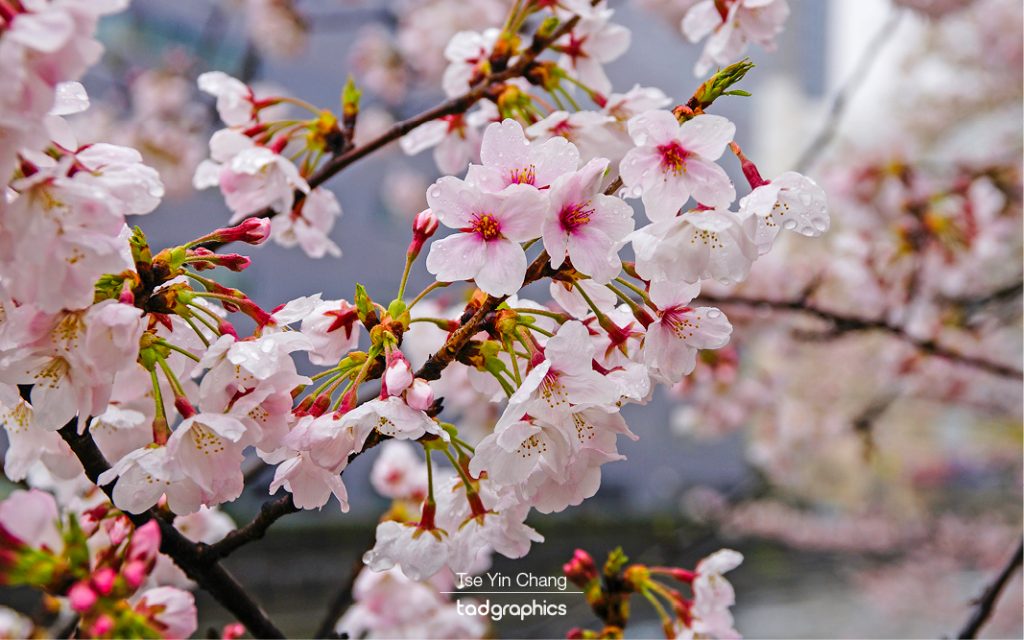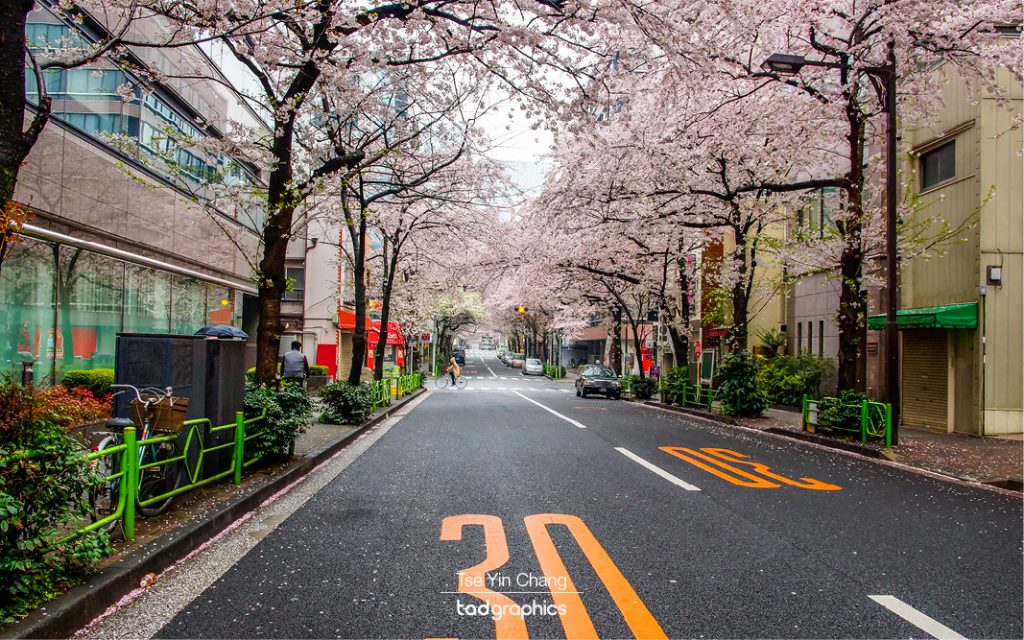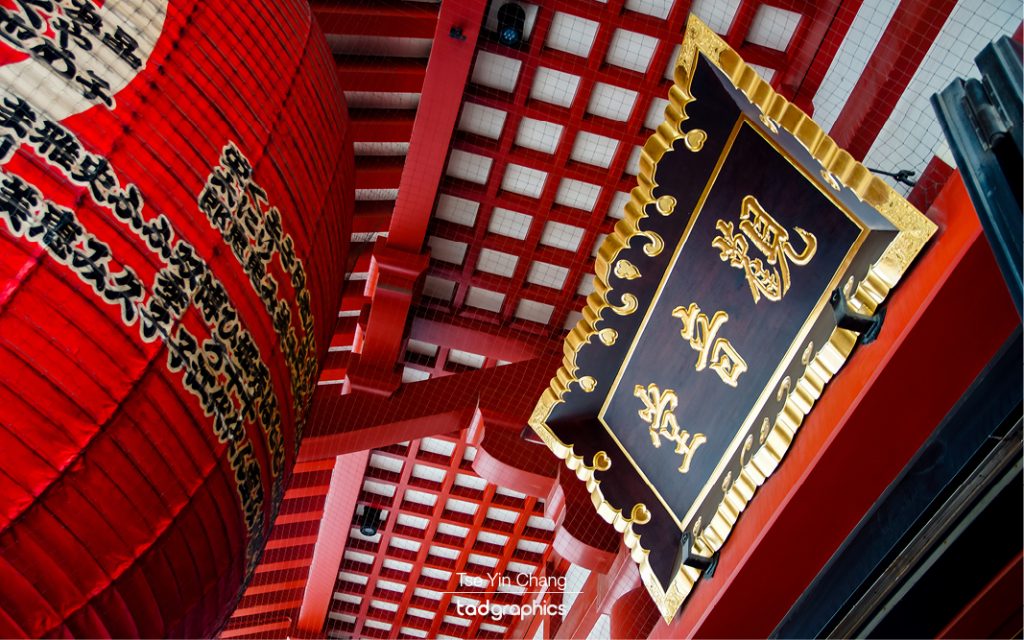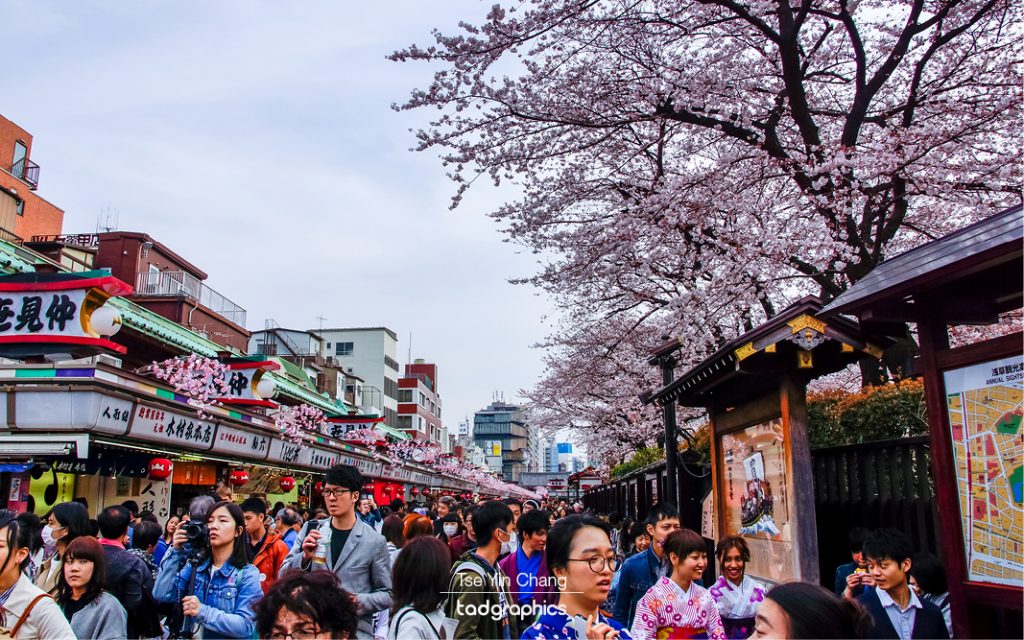
I had been in Japan for a while now, and had enjoyed visiting Kamakura, Kyoto, Nara, Osaka and Yokohama. My final stop however, was one which everyone has heard of – and one which I was excited to visit again. Japan’s capital, Tokyo, known across the world as a sprawling, futuristic hive of activity and one of the biggest cities in the world.
Japan’s high-tech and efficient nature is personified in the Shinkansen – or bullet train as it is often referred to in English. These connect much of the country and can reach speeds of up to 320 km/h. They are rarely late, and are one of the most used rail networks in the world. This all makes them more than just a way to get from A to B, and they are themselves in fact something worth experiencing if you are ever in Japan. Although mine was a short two hours and twenty minutes from Kyoto, I enjoyed watching the countryside roll past outside the window. As I was spending the majority of my trip in various cities, it was nice to get a glimpse of Mount Fuji and the country’s rural side.

Tokyo is vast, and its centre is large enough to encompass several different districts. There is quite a bit of variation between these, with each offering a distinct character. After arriving into the city around lunch time, I decided to start with Asakusa – one of the oldest parts of Tokyo. Here, the bright flashing lights and hyper-modern atmosphere that dominates much of the city are less prevalent, and some of the most impressive historic buildings can be found in the area. The skyscrapers that occupy much of the city centre give way to more reasonable sized buildings in Asakusa. It has long been a gritty, lower income neighbourhood, and it was traditionally where many Japanese migrants ended up when they first moved out of the country. As such, it has always been known for its vibrant (if slightly seedy) atmosphere, and as a place where a good time can be had. In recent years it has cashed in on the rise of tourism, and it is a popular destination for visitors. There are markets where tourists buy cheap souvenirs alongside locals doing their food shop, and there are numerous festivals which I hear are well worth attending if you are lucky enough to be there at the right time of year.

Asides from this, many tourists come to see the temples. Despite its numerous worldly attractions, it has always also been home to more spiritual pursuits and there are many places of worship nearby. The Sensoji temple is the largest Buddhist place of worship in the city and was one of the nicest I had seen on my trip. The Asakusa Shrine is the most prominent Shinto temple and dates back to 1649. It is without question a blessing that both of these survived the air raids of the Second World War which destroyed a large number of the city’s historic buildings.
I only had three days in Tokyo, so I spent the rest of my time trying to see as much as possible. Although this was my second time visiting the city, I chose to spend my time exploring places I hadn’t already visited. One of these was Shibuya, a trendy part of town which is known for its youth culture. This place is what you imagine when you think of Tokyo, and the streets are packed full of people scurrying around in the shadow of tall glass buildings. At night the whole area lights up in various neon shades and huge screens display advertising everywhere you look. All the big international brands have shops here, and it is a hotspot for nightlife.

In the heart of the neighbourhood is the famous Shibuya Crossing. This is possibly the busiest intersection in the world, and aside from the traffic which comes from five directions, the number of pedestrians who pass through has to be seen to be believed. When the lights turn red (and they all turn red at once so that no cars pass from any direction), the mass of people surges forward from all sides and somehow manage to pass each other in an orderly fashion. Accordingly during peak hours, over 1000 people cross the intersection at the same time. After spending some time wandering around Shibuya, I watched the crossing for a while before moving on.
I spent the rest of my time wandering the city streets and soaking up the atmosphere. Although both are comparable in terms of prosperity and level of development, Tokyo feels completely different to Perth or to any other Australian city for that matter. I enjoyed absorbing the strange sights and sounds as well as trying the excellent food. Even though I had already witnessed the cherry blossoms which I had wanted to see elsewhere, I was still pleased to catch a few more glimpses of them along various streets and in some of the city’s parks, two of them being Chidorigafuchi and Kitanomaru Park.

Having thoroughly enjoyed my time in Japan savouring authentic Japanese street foods, shopping and exploring the various cities, I headed to the airport and back home.
Prints from my Japan photo collection are available in a variety of different sizes and framing options. Please get in touch to find out more.
See also:
- Adventures in Japan – chasing cherry blossom – Part 1: Osaka and Nara
- Adventures in Japan – chasing cherry blossom – Part 2: Kyoto
- Adventures in Japan – chasing cherry blossom – Part 3: Kamakura and Yokohama



